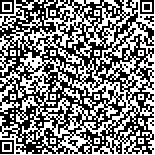| 引用本文: |
朱冰瑶, 曾令聪, 刘倩宏, 李江伟, 吴凯, 陈雄, 彭清华, 姚小磊.除风益损汤对兔角膜损伤后瘢痕形成及TGF-β1、Smad3、α-SMA蛋白表达的影响[J].湖南中医药大学学报,2024,44(11):1942-1950[点击复制] |
|
| |
|
|
| 本文已被:浏览 1732次 下载 785次 |
| 除风益损汤对兔角膜损伤后瘢痕形成及TGF-β1、Smad3、α-SMA蛋白表达的影响 |
| 朱冰瑶,曾令聪,刘倩宏,李江伟,吴凯,陈雄,彭清华,姚小磊 |
| (湖南中医药大学第一附属医院, 湖南 长沙 410007;深圳市中西医结合医院, 广东 深圳 518104;郴州市中医院, 湖南 郴州 423000;湖南中医药大学, 湖南 长沙 410208;广州中医药大学深圳中西医结合临床医学院, 广东 深圳 518104) |
| 摘要: |
| 目的 探讨除风益损汤对兔角膜损伤后瘢痕形成及转化生长因子-β1(ransforming growth factor-beta 1, TGF-β1)、果蝇母本抗生存因子蛋白3(small mothers against decapentaplegic 3, Smad3)、α-平滑肌肌动蛋白(α-smooth muscle actin, α-SMA)蛋白表达的影响。方法 取健康月龄新西兰兔48只,按随机数字法将其分成4组,每组12只,设为空白组、模型组、除风益损汤组(以下简称中药组)、重组牛碱成纤维细胞生长因子滴眼组(以下简称贝复舒组);中药组予除风益损汤灌胃,1次/d,空白组、模型组、贝复舒组予等体积生理盐水灌胃,1次/d,贝复舒组予重组牛碱成纤维细胞生长因子滴眼液滴眼,3次/d;建模后各组于7、14、28 d在高倍显微镜下观察角膜损伤修复情况,共聚焦激光断层扫描观察角膜细胞,Masson染色观察角膜组织病理改变,Western blot检测角膜组织中TGF-β1、Smad3、α-SMA蛋白表达。结果 眼前节拍照:可见兔角膜7、14、28 d时中药组、贝复舒组角膜损面积伤较模型组角膜损伤面积明显减小。共聚焦激光断层扫描角膜浅层细胞:在造模后28 d,模型组呈现出大量瘢痕组织,同时存在肌成纤维细胞;中药组和贝复舒组可见成纤维细胞及角膜基质细胞,以及极少量瘢痕组织。角膜混浊度分级:与空白组比较,模型组在造模后7、14、28 d的角膜混浊分级均明显升高(P<0.01),呈时间相关性,但28 d时模型组的角膜混浊分级出现回落,与模型组相比,中药组和贝复舒组在造模后7、14、28 d的角膜混浊分级均明显降低(P<0.01),且呈时间相关性(P<0.01)。Masson切片染色:在造模后28 d,空白组可见角膜上皮整齐连续排列,基质层纤维排列整齐,染色致密,厚度均一;模型组伤口处角膜上皮细胞不连续分布,且角膜前部基质浅蓝色胶原纤维排列紊乱,呈不连续状态,厚度不一,角膜后部基质浅蓝色胶原纤维排列较混乱,呈紊乱纤维束;中药组可见角膜前部基质浅蓝色胶原纤维较模型组排列有序,稍疏松,呈连续状态,角膜后部基质浅蓝色胶原纤维排列有序;贝复舒组见角膜前部基质浅蓝色胶原纤维较模型组排列有序,稍疏松,呈连续状态,仍存在纤维束,角膜后部基质浅蓝色胶原纤维排列有序。Western blot检测:与模型组比较,中药组、贝复舒组的角膜组织中TGF-β1、Smad3、α-SMA蛋白表达在7、14、28 d时均显著降低(P<0.05)。结论 除风益损汤能促进角膜损伤修复,抑制角膜瘢痕化,并对TGF-β1、Smad3、α-SMA蛋白产生影响。 |
| 关键词: 除风益损汤 角膜瘢痕化 角膜修复 转化生长因子-β1 果蝇母本抗生存因子蛋白3 α-平滑肌肌动蛋白 |
| DOI:10.3969/j.issn.1674-070X.2024.11.002 |
| 投稿时间:2024-05-18 |
| 基金项目:国家自然科学基金面上项目(82174443、81860870);湖南省自然科学基金面上项目(2021JJ30527);湖南省卫生健康委员会高层次人才计划(2022年);湖南省中医药科研计划项目(2021023);湖南中医药大学一流学科开放基金项目(2021ZYX05)。 |
|
| Effects of Chufeng Yisun Decoction on scar formation and protein expressions of TGF-β1, Smad3, and α-SMA in rabbits after corneal injury |
| ZHU Bingyao, ZENG Lingcong, LIU Qianhong, LI Jiangwei, WU Kai, CHEN Xiong, PENG Qinghua, YAO Xiaolei |
| (The First Hospital of Hunan University of Chinese Medicine, Changsha, Hunan 410007, China;Shenzhen Hospital of Integrated Chinese and Western Medicine, Shenzhen, Guangdong 518104, China;Chenzhou Municipal Hospital of TCM, Chenzhou, Hunan 423000, China;Hunan University of Chinese Medicine, Changsha, Hunan 410208, China;Shenzhen Clinical School of Integrated Chinese and Western Medicine, Guangzhou University of Chinese Medicine, Shenzhen, Guangdong 518104, China) |
| Abstract: |
| Objective To explore the effects of Chufeng Yisun Decoction (CFYSD) on scar formation and protein expressions of transforming growth factor-beta 1 (TGF-β1), small mothers against decapentaplegic 3 (Smad3), and α-smooth muscle actin (α-SMA) after corneal injury in rabbits. Methods Forty-eight healthy New Zealand rabbits of the same age were divided into four groups using the random number method, namely blank group, model group, CFYSD group, and eye drop group with recombinant bovine basic fibroblast growth factor (hereinafter referred to as the "Beifushu group"), with 12 rabbits in each group. CFYSD group was given adult equivalent dose of CFYSD via gavage once a day, while blank, model, and Befushu groups were given the same volume of normal saline via gavage once a day; additionally, Befushu group was administered with eye drops containing recombinant bovine basic fibroblast growth factor three times a day. At 7, 14, and 28 days after modeling, corneal injury and repair were observed under a high-power microscope, corneal cells were examined by confocal laser tomography, pathological changes of corneal tissue were observed by Masson staining, and the protein expressions of TGF-β1, Smad3, and α-SMA in corneal tissue were determined by Western blot. Results Photographs of the anterior segment showed that at 7, 14, and 28 days after modeling, the corneal lesion area in CFYSD and Befushu groups was significantly smaller than that in model group. Confocal laser tomography of superficial corneal cells revealed that at 28 days after modeling, model group exhibited a large amount of scar tissue, along with the presence of myofibroblasts. In contrast, CFYSD and Befushu groups showed fibroblasts and corneal stromal cells, with only minimal scar tissue present. Corneal opacity grading showed that compared with blank group, the corneal opacity grade of model group significantly increased at 7, 14, and 28 days after modeling (P<0.01), showing a time-dependent correlation; however, it then fell at 28 days, which may be due to the self-healing ability of rabbit cornea. Compared with model group, the corneal opacity grades of CFYSD and Beifushu groups were significantly reduced at 7, 14, and 28 days after modeling (P<0.01), and the reduction trend increased over time, showing a time-dependent correlation (P<0.01). Masson staining revealed that at 28 days after modeling, blank group showed neatly and continuously arranged corneal epithelium and orderly aligned stromal fibers, with uniform thickness and dense staining. In model group, the corneal epithelial cells in the lesion were distributed discontinuously; the light blue-stained collagen fibers in the anterior corneal stroma were disordered and discontinuous with uneven thickness, and those in the posterior stroma were also arranged in a chaotic manner, appearing as disordered fiber bundles. Compared with model group, the light blue-stained collagen fibers in the anterior stroma in CFYSD group were more orderly and slightly looser, appearing continuous, and those in the posterior stroma were also arranged orderly. Compared with model group, the light blue-stained collagen fibers in the anterior stroma in Befushu group were more orderly, slightly looser, and continuous, with fiber bundles still present, and those in the posterior stroma were also arranged orderly. Western blot showed that at 7, 14, and 28 days after modeling, the protein expression of α-SMA in the corneal tissue was the highest in model group, while it was significantly lower in CFYSD and Befushu groups than that in model group (P<0.05); similarly, the protein expressions of TGF-β1 and Smad3 were also the highest in model group at these time points, while they were significantly lower in CFYSD and Befushu groups than those in model group (P<0.05). Conclusion CFYSD can promote the repair of corneal injury, inhibit corneal scarring, and exert effects on TGF-β1, Smad3, and α-SMA protein expressions. |
| Key words: Chufeng Yisun Decoction corneal scarring corneal repair transforming growth factor-beta 1 small mothers against decapentaplegic 3 α-smooth muscle actin |
|

二维码(扫一下试试看!) |
|
|
|
|




